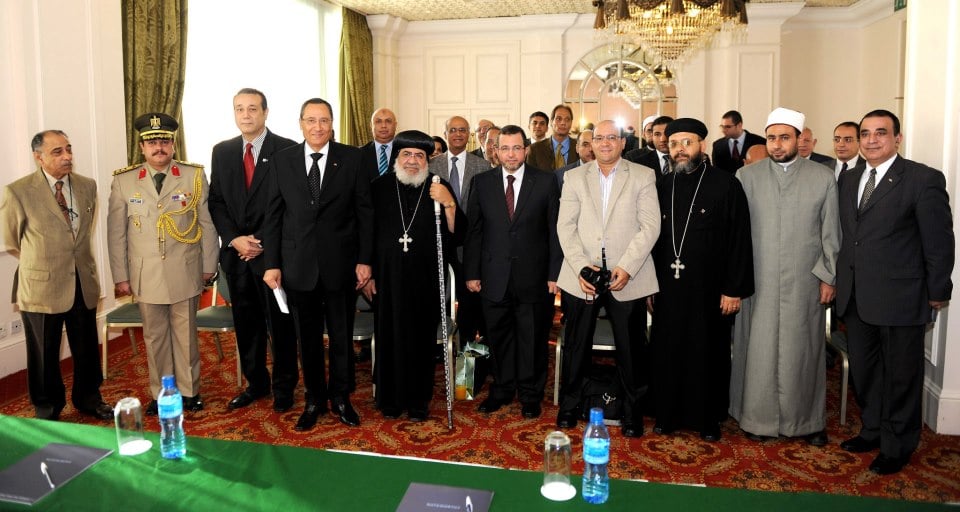Bordered with H1N1 concerns, the government has taken measures to reduce crowding in Egypt: staggering school schedules, issuing warnings in the metro and airport, and canceling activities that attract large crowds.
Although the FIFA Under 20 World Cup was allowed to take place; since May, Egypt’s moulids, religious festivals celebrating saints, have been allegedly cancelled. In my neighborhood near the Sayyeda Zeinab Mosque, for example, this summer’s moulid was apparently a pale imitation of its usual revelry.
And yet, when the holy day of a particular religious figure rolls around, the government is fairly powerless to prevent people from traveling to the destination. In mid-October this year, that destination was Tanta, where the largest moulid in Egypt annually commemorates Sayed Ahmed El-Badawi at his tomb in Tanta’s grand mosque.
As moulids venerate a person rather than God, some Muslim leaders consider the festivals idolatrous at worst, and at best a cultural, rather than religious, tradition. Egyptian Coptic Christians historically often joined in moulid festivities, and most moulids are associated with primarily Sufi saints. Moulid celebration usually includes the practice of zikr, rhythmic motion of the body to induce spiritual trance.
The moulid of Sayed Ahmed El-Badawi honors a 13th century Moroccan Sufi who won fame battling Crusaders and founding the Badawiya Sufi order. According to the 1990 documentary “Sayed Ahmed El-Badawi: Egyptian Religious Festival, by Fadwa El-Guindi, the 700-year-old moulid is probably the oldest in Egypt.
Friends and I decided to go in hopes that Egyptians’ love for a good party would override lingering fears of the flu, and that the government would know better than to annoy a large group of people by trying to send them away.
A huge group of people, that is. The moulid usually draws millions of pilgrims from all over Egypt, often doubling Tanta’s population. We had heard that El-Badawi’s moulid would have bumper cars, funny hats and maybe barbers performing circumcisions.
According to the advice of a friend from Tanta, we went up on Oct. 8, only to find that we were two weeks too early.
“When is the moulid? we asked.
“In a week, we were told.
“Are you sure?
“No, in two weeks.
Apparently, millions of people come to Tanta without knowing the exact date. We visited the mosque anyway, to see the famed saint’s tomb. Unfortunately, the local police decided they did not feel comfortable allowing us to wander Tanta unaccompanied. After briefly letting us see the mosque, (“No pictures ), we were escorted out.
We told the police officers that we neither needed nor wanted a police escort, and that having one would make it impossible to wander the city streets in a natural way. They finally agreed to allow a plainclothes officer tail us.
We swore we would come back in two weeks, (or was it one?), still determined to see the moulid.
Two weeks later, on Oct. 22, four of us met at Ramses Station to try to catch the train. Apparently they were booked through until 6 am. We went to catch a minibus for LE 7, as we had done two weeks prior; but it seemed everyone was trying to get to Tanta. A minibus would pull in and a crowd of men would run it down and then try to stuff themselves into it. After trying to follow suit for an hour, we decided to hire a taxi.
After the taxi broke down and we flagged a cargo truck, we finally reached the outskirts of town. Immediately we could tell that the moulid was on. Crowds pushed us closer and closer to the mosque. We stopped to buy the distinctively shiny cone-shaped hats that many of the mostly-male partiers wore. One had a horn, the other a birthday noisemaker. Mine was shaped like a fez.
Nervous about being apprehended at the mosque again by the shurta, we followed the crowds surging down the street. Quickly surrounded, (we were two Americans, an Australian and an Egyptian), young boys asked us our names and tagged along, forming a parade. We learned that later in the night, another parade would follow the imam, dressed in the robe of Sayed El-Badawi.
The crowd seemed to lack any agenda other than its own existence, ebbing and flowing to and from the mosque. Vendors selling hugely thick slabs of basbusa and Tanta’s famed hummus sweets lined the street, as well as hat sellers, but most people seemed to have gathered merely to participate in the street party.
Exhausted by the crowd, we moved towards the mosque. On the way to join the crush of people honoring the saint at his tomb, someone doused my friend’s hand with a sweet-smelling red substance that looked like blood. “Misk, he was told.
Inside the mosque, I was struck by the impression of a giant slumber party. Families sat in groups on the floor, some eating, most lying down. In the middle of the mosque, a group of men were “zikr-ing, seeming to bow to each other as they sought oneness with God.
We found a place on the carpet and sat down as well. Our neighbors grew curious and gathered round. A baby took a fancy to our hats. A woman gave us fresh red dates. Others passed out hard chalky candy, which seemed more for the purpose of passing on than eating. It seemed some of the families had been camped out in the mosque for a long time, possibly days. Explaining perhaps the ability to gather without knowing the exact date; at the end of the cotton harvest is what various internet sources have professed.
At one point an elderly man waved his cane angrily, berating his fellows for lying lazily around. Waleed, our self-appointed guardian, said not to worry, the man was crazy. The group of men “zikr-ing periodically started and stopped, young men rotated through the duty of holding a maroon banner with gold letters. Children laughed, women slept. The goal seemed to be simple proximity to the saint on his holy day.







